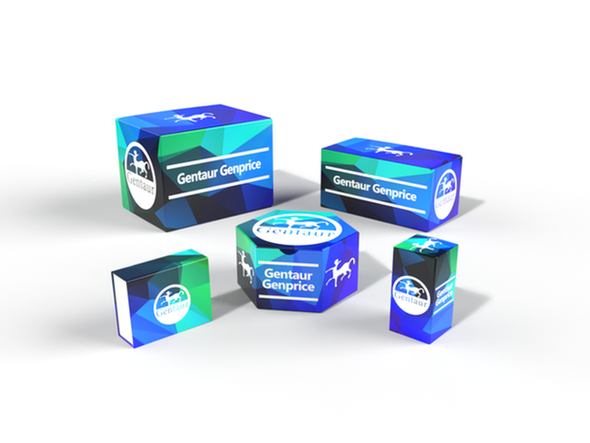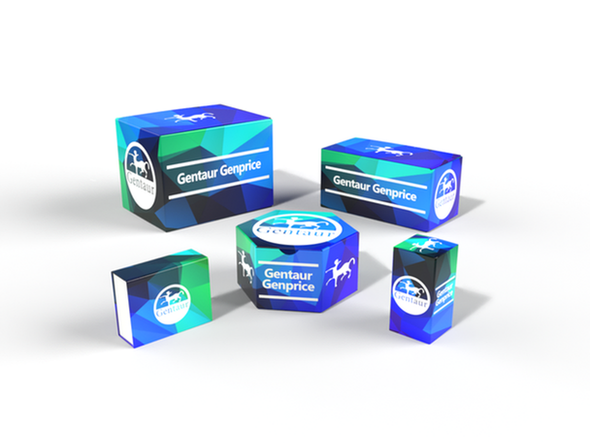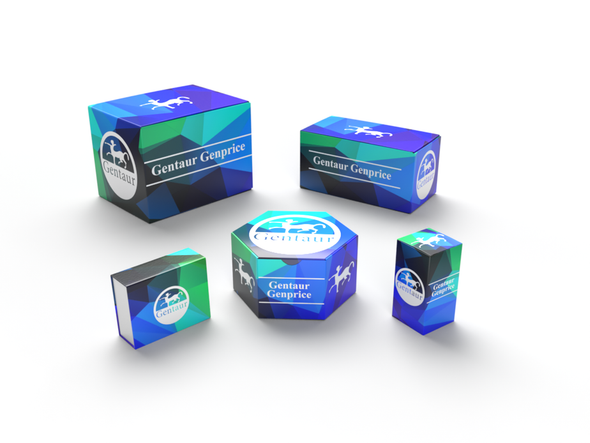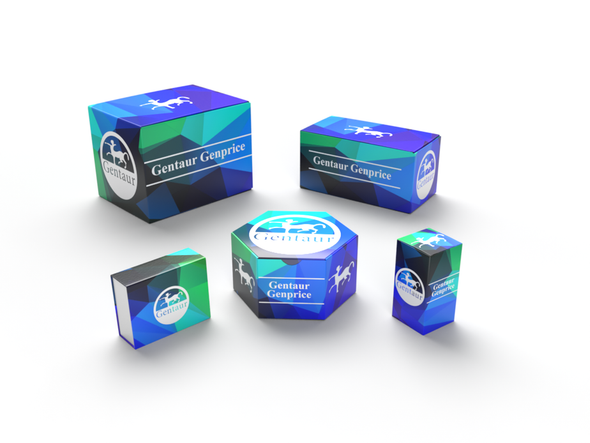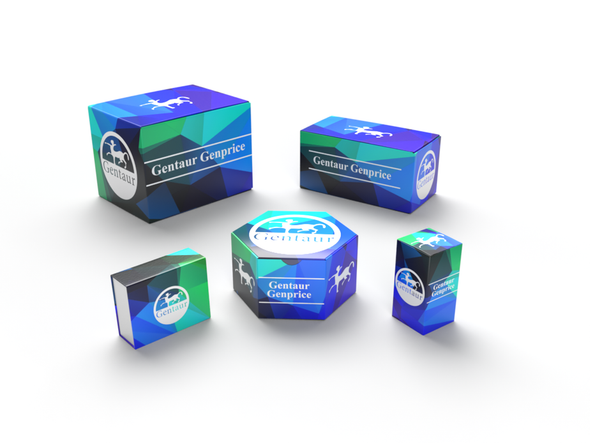Description
ENA-78 Antibody (biotin) | XP-5123Bt | Gentaur UK, US & Europe Distribution
Host: Rabbit
Reactivity: Human
Homology: N/A
Immunogen: Produced from sera of rabbits pre-immunized with highly pure (>98%) recombinant hENA-78 (human ENA-78) .
Research Area: Signal Transduction, Chemokines & Cytokines, Antibody Pairs
Tested Application: E, WB
Application: ELISA:
Sandwich: To detect hENA-78 by sandwich ELISA (using 100 μL/well antibody solution) a concentration of 0.25 - 1.0 μg/mL of this antibody is required. This biotinylated polyclonal antibody, in conjunction with our Polyclonal Anti-Human ENA-78 (XP-5123) as a capture antibody, allows the detection of at least 0.2 - 0.4 ng/well of recombinant hENA-78.
Western Blot:
To detect hENA-78 by Western Blot analysis this antibody can be used at a concentration of 0.1 - 0.2 μg/mL. Used in conjunction with compatible secondary reagents the detection limit for recombinant hENA-78 is 1.5 - 3.0 ng/lane, under either reducing or non-reducing conditions.
Specificiy: N/A
Positive Control 1: N/A
Positive Control 2: N/A
Positive Control 3: N/A
Positive Control 4: N/A
Positive Control 5: N/A
Positive Control 6: N/A
Molecular Weight: N/A
Validation: N/A
Isoform: N/A
Purification: Anti-hENA-78 specific antibody was purified by affinity chromatography and then biotinylated.
Clonality: Polyclonal
Clone: N/A
Isotype: N/A
Conjugate: Biotin
Physical State: Lyophilized
Buffer: N/A
Concentration: N/A
Storage Condition: ENA-78 antibody is stable for at least 2 years from date of receipt at -20˚C. The reconstituted antibody is stable for at least two weeks at 2-8˚C. Frozen aliquots are stable for at least 6 months when stored at -20˚C. Avoid repeated freeze-thaw cycles.
Alternate Name: SCYB5, ENA-78, ENA78, SCYB5, C-X-C motif chemokine 5, Epithelial-derived neutrophil-activating protein 78,
User Note: Centrifuge vial prior to opening.
BACKGROUND: ENA-78 is a a 9.9kD inflammatory chemokine that belongs to the CXC chemokine family. ENA-78 is expressed by fibroblasts, is induced by bacterial lipopolysaccharides, and is chemotactic for neutrophils. This chemokine is produced concomitantly with Interleukin 8 (IL8) in response to stimulation with either Interleukin 1 (IL1) or Tumor Necrosis Factor alpha (TNFA) . This chemokine is a potent chemotaxin involved in neutrophil activation.


